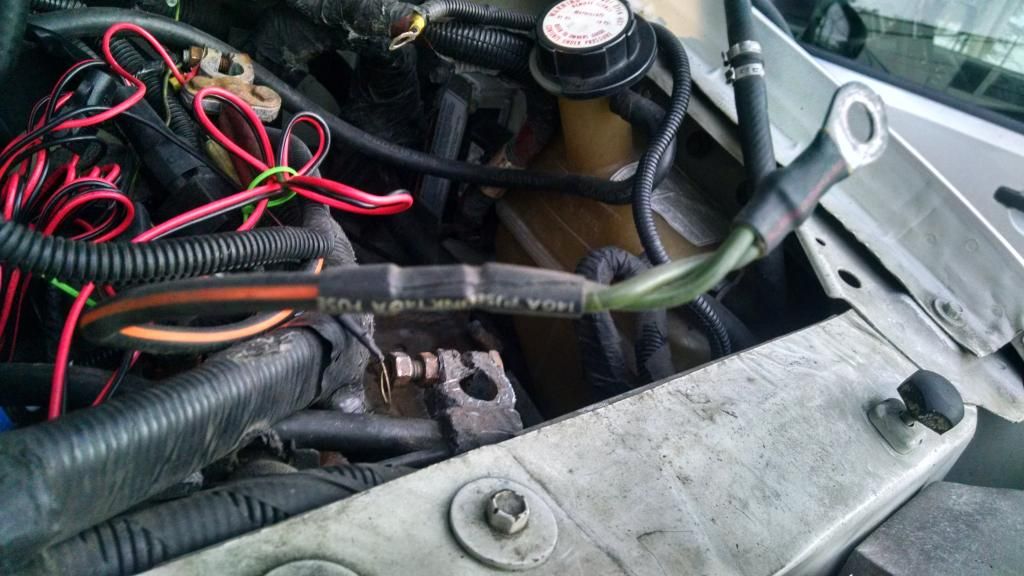I have another thread going here from a while back but I have learned some information since then. I have a 1995 E350 ambulance with a 7.3 diesel with about 155,000 on the clock. Everything was fine and dandy up until a month or so ago when I was using my invertor and blew something, causing the vehicle to lose all power. Dead as can be....just like I had removed the batteries.
After some serious digging, reading, and help from the kind folks here I ended up replacing a fusible link that runs off the starter relay which can be seen in this picture (not mine but the same set up). The link I replaced is that small green one.

Once I did that and connected my batteries the problem seemed to be solved. Started and ran no problem. It was like I had installed batteries while before there were non in the vehicle.
I drove it for a couple hundred miles and lots of around town stuff to help build some confidence back in it.
A couple nights ago however I rinsed the salt off it and had it idling outside while I locked up the building. Had the parking lights on and the high idle going (it was -5 out). Hopped in the van, pulled the switch for the headlights and BAM, it just shut off. No power again. Nothing.
I cut out the fusible link I had replaced and jumped it with a wire. The vehicle powered back up and that is how it stand currently. Sitting in a parking lot but not fixed.
What does that fusible link feed that could possible be killing ALL power the vehicle? I am having trouble finding a wiring diagram that shows it. Further more, I thought I had just over loaded the inverter and caused the problem but clearly not. The only thing that was consistent between the two issues was the high idle was on in both cases.

After some serious digging, reading, and help from the kind folks here I ended up replacing a fusible link that runs off the starter relay which can be seen in this picture (not mine but the same set up). The link I replaced is that small green one.

Once I did that and connected my batteries the problem seemed to be solved. Started and ran no problem. It was like I had installed batteries while before there were non in the vehicle.
I drove it for a couple hundred miles and lots of around town stuff to help build some confidence back in it.
A couple nights ago however I rinsed the salt off it and had it idling outside while I locked up the building. Had the parking lights on and the high idle going (it was -5 out). Hopped in the van, pulled the switch for the headlights and BAM, it just shut off. No power again. Nothing.
I cut out the fusible link I had replaced and jumped it with a wire. The vehicle powered back up and that is how it stand currently. Sitting in a parking lot but not fixed.
What does that fusible link feed that could possible be killing ALL power the vehicle? I am having trouble finding a wiring diagram that shows it. Further more, I thought I had just over loaded the inverter and caused the problem but clearly not. The only thing that was consistent between the two issues was the high idle was on in both cases.




